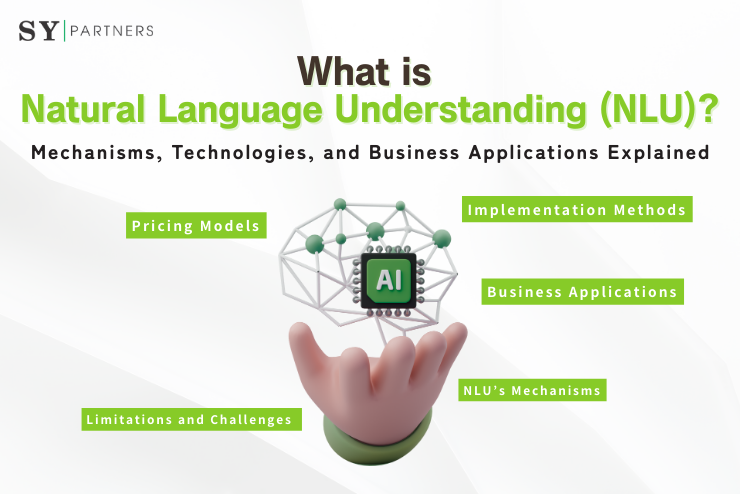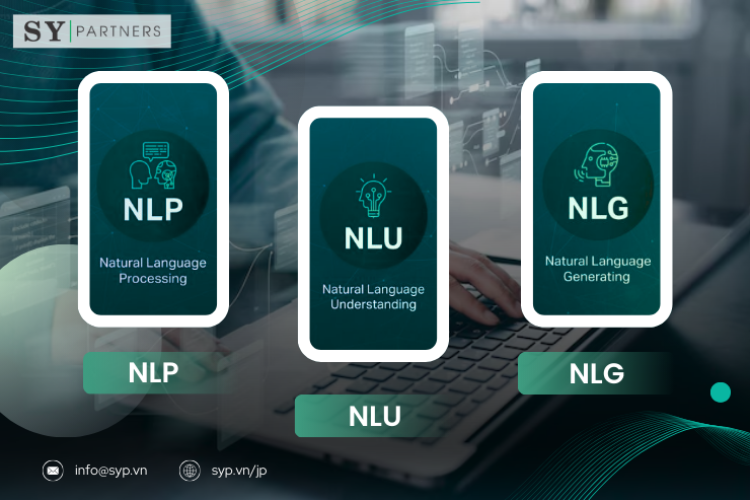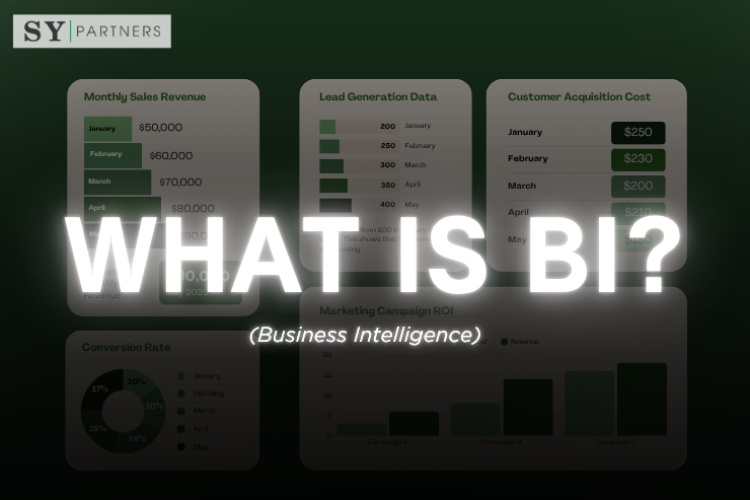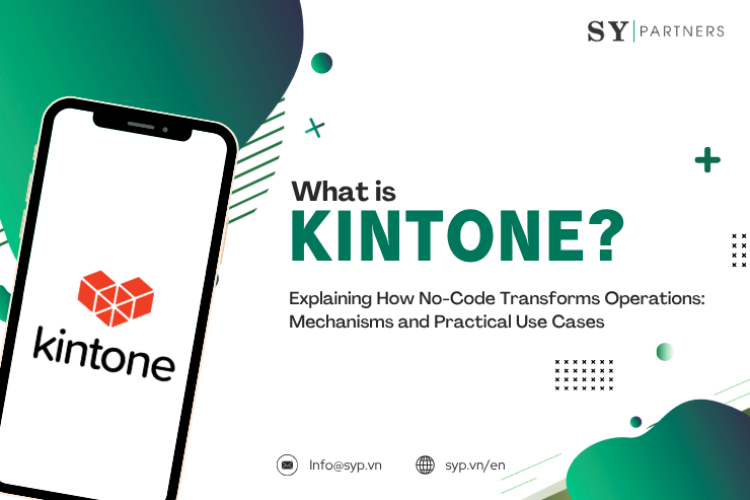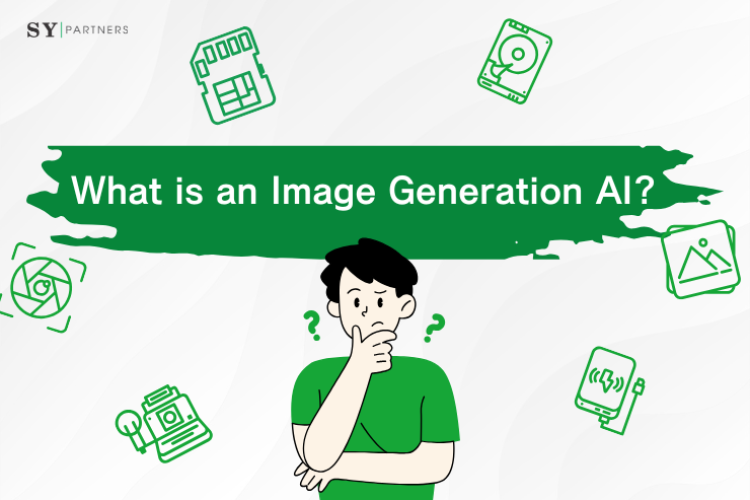What is Natural Language Understanding (NLU)? Mechanisms, Technologies, and Business Applications
Natural Language Understanding (NLU), a core technology within Natural Language Processing (NLP), is an AI capability that accurately interprets context and intent from text and speech. Unlike simple word processing, NLU serves as the foundation for conversational AI, powering applications such as chatbots, voice assistants, and sentiment analysis. In business, NLU contributes to productivity gains and cost reduction by automating customer interactions and streamlining data analysis.
In recent years, the acceleration of digital transformation (DX) has driven the adoption of NLU among Japanese companies, with expectations of enhancing customer experience and optimizing business processes. This article explores the mechanisms and underlying technologies of NLU, presents real-world business use cases, highlights challenges in implementation, and offers insights on how enterprises can leverage NLU to strengthen competitiveness.
1. What is Natural Language Understanding (NLU)
Natural Language Understanding (NLU) is a subfield of Natural Language Processing (NLP) that enables computers to comprehend human language—both text and speech—and extract the underlying meaning and intent.
While NLP covers the overall processing of language data, NLU specifically focuses on “understanding,” capturing context and user objectives. For example, when a user asks, “What’s the weather tomorrow?”, NLU does not merely analyze the words but recognizes the intent that the user is seeking a weather forecast and supports the process of generating an appropriate response.
Mechanism of Natural Language Understanding (NLU)
NLU consists of the following key components:
- Intent Recognition: Identifying the purpose behind the user’s utterance or text.
Example: “I want to order a pizza” → Recognizes the ordering intent. - Entity Extraction: Extracting specific information from the text, such as names, locations, or dates.
Example: “Reservation at 2 PM” → Identifies the time and task. - Context Understanding: Referring to conversation history or background information to generate appropriate responses.
Example: Providing customized suggestions based on prior interactions.
Applications of NLU include voice assistants (Siri, Alexa), customer support chatbots, sentiment analysis, and machine translation, contributing to improved business efficiency and enhanced customer experiences.
2. Mechanism and Key Technologies of NLU
NLU transforms human language into a format that machines can interpret through a complex process. Its mechanism consists of the following steps and technologies:
2.1 Text Preprocessing
The first step in NLU is preparing text or speech data so that machines can process it effectively. Major preprocessing techniques include:
- Tokenization: Splitting sentences into words or meaningful units. In languages like Japanese, morphological analysis is used, while in English, spaces and punctuation often serve as delimiters.
- Normalization: Standardizing case, removing symbols or noise, and ensuring consistency across datasets.
- Stopword Removal: Removing common words that are not useful for analysis (e.g., “is,” “the,” “and” in English; “は,” “の” in Japanese) to focus on meaningful content.
2.2 Feature Extraction
From preprocessed data, features are extracted to understand meaning. Common methods include:
- Word Embeddings: Converting words into a semantic vector space to capture similarity and relationships (e.g., Word2Vec, BERT).
- Syntactic Analysis: Analyzing sentence structure to identify relationships between subjects, verbs, and objects.
- Semantic Analysis: Interpreting the meaning of words or phrases within the broader context of the sentence or conversation.
2.3 Intent and Entity Recognition
The core of NLU is identifying user intent and extracting key entities. For example, if a user says, “Show me tomorrow’s weather forecast in New York,” the system extracts the intent “provide weather forecast” and entities “New York” and “tomorrow.”
Machine learning models and deep learning techniques, such as Transformer-based architectures, are employed to learn patterns from large, diverse datasets across languages and regions. This enables NLU systems to handle multilingual inputs and global usage scenarios.
2.4 Context Integration
NLU takes into account past interactions and external information to understand context. For example, if a user asks, “Next, what’s the weather in Paris?” the system retains the intent “weather forecast” and identifies “Paris” as a new entity. This allows the AI to maintain natural and coherent dialogue across multiple queries.
3. Eight Business Applications of NLU
NLU plays a vital role in streamlining business operations and enhancing customer experiences globally. Here are eight representative use cases across international markets:
3.1 Automation of Customer Support
NLU-powered chatbots handle customer inquiries in real time. For example, global e-commerce companies like Amazon use NLU to recognize intents such as “I want to return a product” and provide step-by-step guidance, enabling 24/7 support and higher customer satisfaction.
3.2 Sentiment Analysis and Customer Feedback
NLU analyzes customer sentiment (positive, negative, neutral) from social media, reviews, and surveys. Companies such as Airbnb or TripAdvisor use NLU to detect complaints like “The room was too small” or praise like “Excellent service,” helping teams improve service quality promptly.
3.3 Enhancement of Voice Assistants
NLU underpins voice assistants like Alexa, Google Assistant, and Siri. Smart home companies worldwide leverage NLU to interpret commands such as “Turn off the lights” or “Set an alarm,” enabling natural, conversational interactions.
3.4 Automatic Translation and Multilingual Support
Translation systems utilizing NLU provide context-aware, accurate multilingual translations. Global corporations like Microsoft or SAP use NLU to automate email and document translation across languages, reducing errors and facilitating international communication.
3.5 Document Analysis and Summarization
NLU extracts key information from contracts, reports, or research papers. Law firms and multinational corporations use NLU to identify critical clauses, summarize lengthy documents, and streamline workflow, reducing manual effort.
3.6 Marketing Optimization
NLU analyzes customer behavior, preferences, and social media activity to design personalized campaigns. Brands like Nike or Spotify use NLU insights to generate targeted promotions, improving engagement and conversion rates.
3.7 Internal Knowledge Management
NLU organizes internal documents, emails, and project data for knowledge retrieval. Global consulting firms like Deloitte or Accenture use NLU to make past project insights accessible, enhancing decision-making and proposal development.
3.8 Application in the Medical Field
NLU analyzes electronic health records and patient feedback. Hospitals and health tech companies worldwide use NLU to extract critical patient information, support diagnosis, prioritize cases, and reduce clinician workload.
4. NLU Pricing Models and Implementation Methods
When introducing Natural Language Understanding (NLU) into a business, it is important not only to evaluate the technical advantages but also to understand the pricing models offered. NLU is currently available in various forms, from open-source solutions to cloud APIs and enterprise-level platforms, and the optimal choice depends on the company’s size and objectives. Below, we compare each pricing model and highlight key characteristics, along with practical implementation tips.
| Solution | Price | Key Features | Use Cases |
|---|---|---|---|
| Open-source (Rasa NLU) | Free | ・Fully customizable ・Can run locally ・Includes basic features like intent recognition and entity extraction | Startups, universities/research institutions, prototype development |
| Cloud API (AWS Comprehend) | Pay-as-you-go (e.g., $0.002 per 100 characters) | ・Supports sentiment analysis and named entity recognition ・Scalable and easy to integrate ・Cloud-based and easy to deploy | SMEs, application developers |
| Enterprise (Cognigy, etc.) | Quote-based (custom pricing) | ・Advanced conversational management including voice input ・Handles large-scale data ・Compliant with high security requirements | Large corporations, finance, telecom, healthcare, and other security-sensitive industries |
Implementation Tips
- Try open-source first: Conduct initial tests using free tools like Rasa NLU.
- Leverage cloud APIs: Deploy scalable solutions using NLU services from AWS, Google Cloud, etc.
- Enhance training data: Accurate intent recognition requires abundant and high-quality training data.
- Adopt a phased approach: Test effectiveness with small projects before rolling out company-wide.
5. Limitations and Challenges of NLU
While NLU is a highly advanced technology, not all challenges have been fully addressed. Currently, there are several important constraints in linguistic, technical, and ethical aspects. This section explains the key challenges to consider when applying NLU in real-world business scenarios.
5.1 Handling Complex Japanese Contexts
Languages like English, Spanish, and Arabic can also be highly context-dependent, using idiomatic expressions, implied subjects, or culturally specific phrasing, which makes NLU challenging. For example, the English phrase “I’m fine” can express contentment, indifference, or even frustration depending on tone and context. On social media platforms like Twitter, users often report that AI models misinterpret sarcasm or irony, highlighting the need for better localization and contextual understanding in multilingual NLU systems.
5.2 Inability to Handle Real-Time Data
NLU alone has limitations in processing rapidly changing real-time data such as social media posts or news updates. Situations requiring immediate responses or reaction to trending topics may require supplementary tools like search engines or topic extraction systems. NLU excels at contextual understanding, but high-speed information processing requires integration with other approaches.
5.3 Strong Dependence on Training Data
NLU performance heavily relies on the quantity and quality of training data. Many Japanese companies use industry-specific terms and unique expressions, but the corresponding datasets may be insufficient. This can result in lower accuracy in intent recognition and entity extraction than expected.
5.4 Ethical Risks and Bias
NLU models can inherit biases present in the training data, potentially generating responses that reflect cultural or gender biases. Misunderstanding user intent can also lead to inappropriate responses, causing confusion or issues. Therefore, especially in public-facing applications, human review and supervision of NLU outputs are necessary.
5.5 Cost and Technical Barriers to Implementation
Advanced NLU solutions are often expensive, and enterprise-grade products require high technical skills for deployment and maintenance. For SMEs, these initial barriers can pose significant challenges, and collaboration with external partners may be essential if in-house technical resources are insufficient.
NLU is a powerful technology, but businesses must be aware of limitations related to Japanese language handling, real-time processing, data quality, ethical considerations, and costs. Strategic adoption while understanding these constraints can still yield substantial benefits.
Conclusion
Natural Language Understanding (NLU) enables computers to deeply understand human language and grasp context and intent. It is increasingly applied in customer support, chatbots, sentiment analysis, voice interfaces, and other areas, improving operational efficiency and user experience.
At the same time, challenges such as language diversity, data quality, and ethical considerations must be addressed. Successful implementation relies on strategies like leveraging open-source tools, trialing cloud APIs, curating high-quality data, and continuous improvement. In the future, integration with generative AI and evolving models will expand NLU’s potential even further.


 EN
EN JP
JP KR
KR